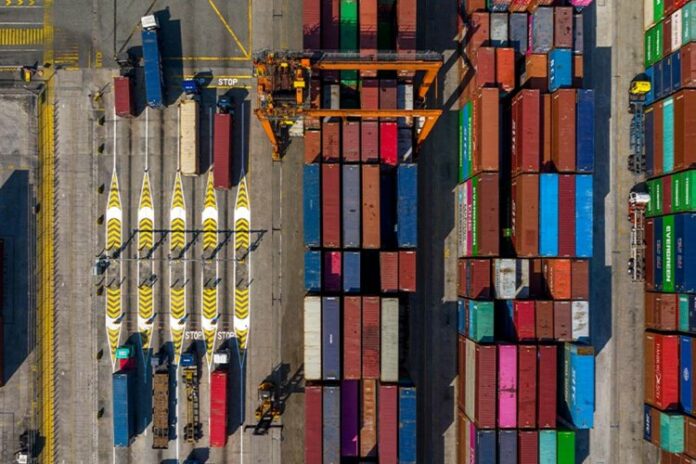One year after the signing of the memorandum of understanding to establish a Green and Digital Shipping Corridor, the Maritime and Port Authority of Singapore (MPA), Port of Los Angeles and Port of Long Beach have completed a comprehensive baselining study.
It forecasts more green jobs, health improvements for local communities and economic benefits for participating countries, emphasizing the future demand for zero- and near-zero emission fuels and the benefits from decarbonizing the shipping routes between the nations.
The study, commissioned by C40 Cities and the ports, and conducted by the American Bureau of Shipping, analyzed maritime trade flows between Singapore, Los Angeles and Long Beach, and provided a baseline of activities and energy demand requirements for vessels operating on the corridor through to 2050.
The study estimates the quantity of near-zero and zero-emission fuels required for this traffic by modelling the adoption of zero and near-zero carbon alternative fuels by vessels operating on the corridor through to 2050, considering various parameters such as fuel production costs and fuel availability, and in view of the targets in the 2023 International Maritime Organization’s Strategy on Reduction of Greenhouse Gas Emissions from Ships. The study can be found at c40.me/3xF60Yw.
“The Port of Long Beach and its partners have been very successful reducing emissions from cargo-handling equipment, trucks and other mobile sources moving cargo in our harbor,” said Port of Long Beach CEO Mario Cordero. “One of the most important parts of this partnership is it allows us to better understand and target a source of emissions that is hard for us to control as a local seaport authority – shipborne emissions.”
“This study provides a sense of scale and scope to inform our implementation of the Green and Digital Shipping Corridor,” said Port of Los Angeles Executive Director Gene Seroka. “Achieving the reductions of greenhouse gas emissions required will take coordination and commitment from public and private stakeholders across the maritime and goods movement industries.”
On a practical level, the study highlights the potential socioeconomic impact of transitioning to zero- and near-zero emission fuels and leveraging on digital solutions. Based on the study’s estimates, the corridor at full implementation could create over 700 new job opportunities in zero- and near-zero emission fuel production and improve local air quality. These estimates support findings by C40 and other organizations that activities undertaken through green shipping corridors can accelerate wider decarbonization across the maritime industry and unlock health benefits for local communities and green economy opportunities for participating countries.
The corridor partners underscore their dedication to a data-driven decision-making approach through the study, utilizing its insights to guide their actions in pursuing the partnership’s decarbonization objectives and aligning with the related goals of the shipping sector. Key findings of the study include:
- Vessels operating on the corridor represent 7% of the world’s container trade, which is about 1% of Singapore’s, 14.5% of Port of Long Beach’s, and 20% of Port of Los Angeles’ traffic.
- The projected annual energy demand of vessels on the corridor is estimated to be approximately 60,000 terajoules, equivalent to approximately two months of Singapore’s national electricity generation.
- Shipping demand on the corridor is estimated to be around 850,000 tons of methanol and 160,000 tons of ammonia annually by 2030, displacing the equivalent greenhouse gas emissions from almost 320,000 cars annually.
- The transition to zero- and near-zero emission fuels could potentially create approximately 700 jobs in the production and supply chain of such fuels by 2030.



